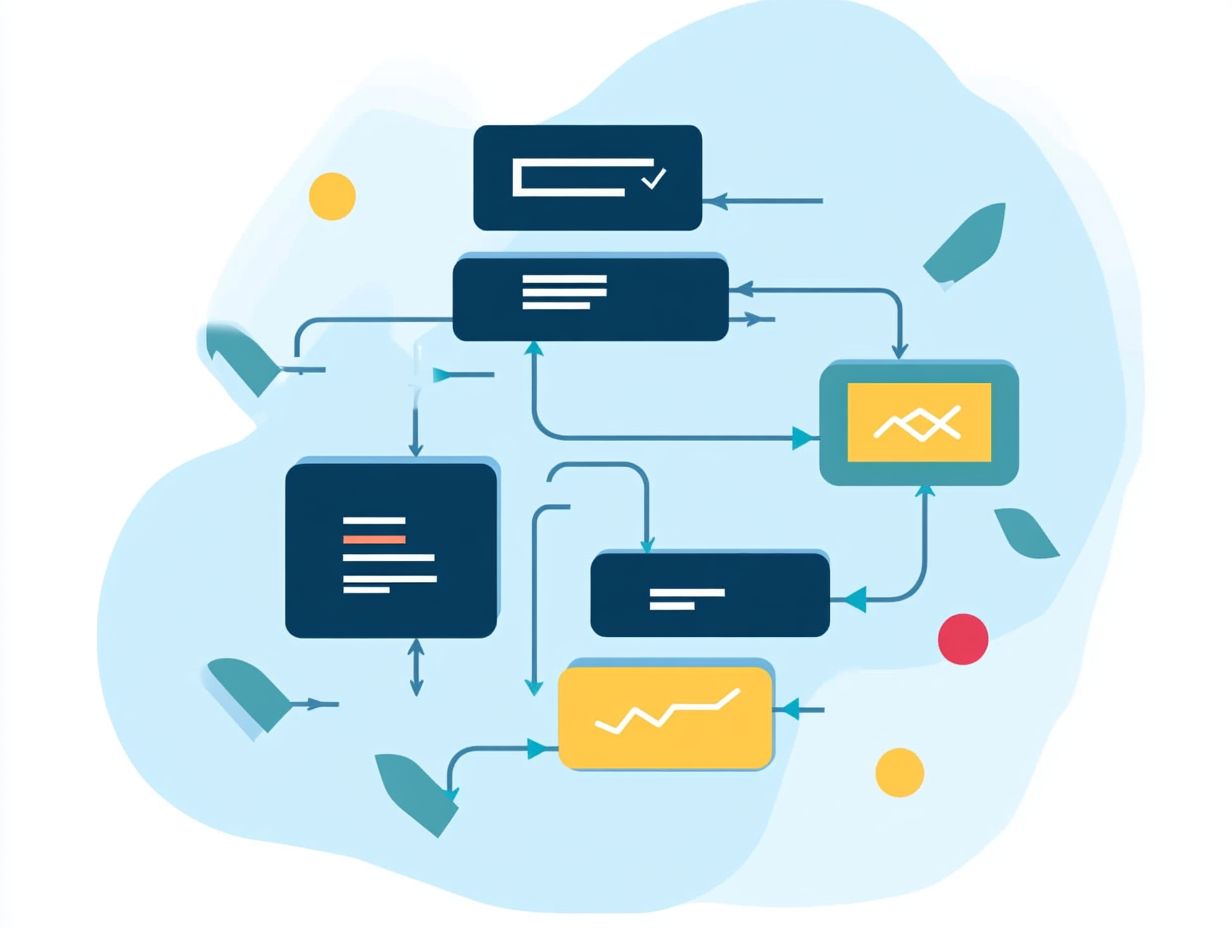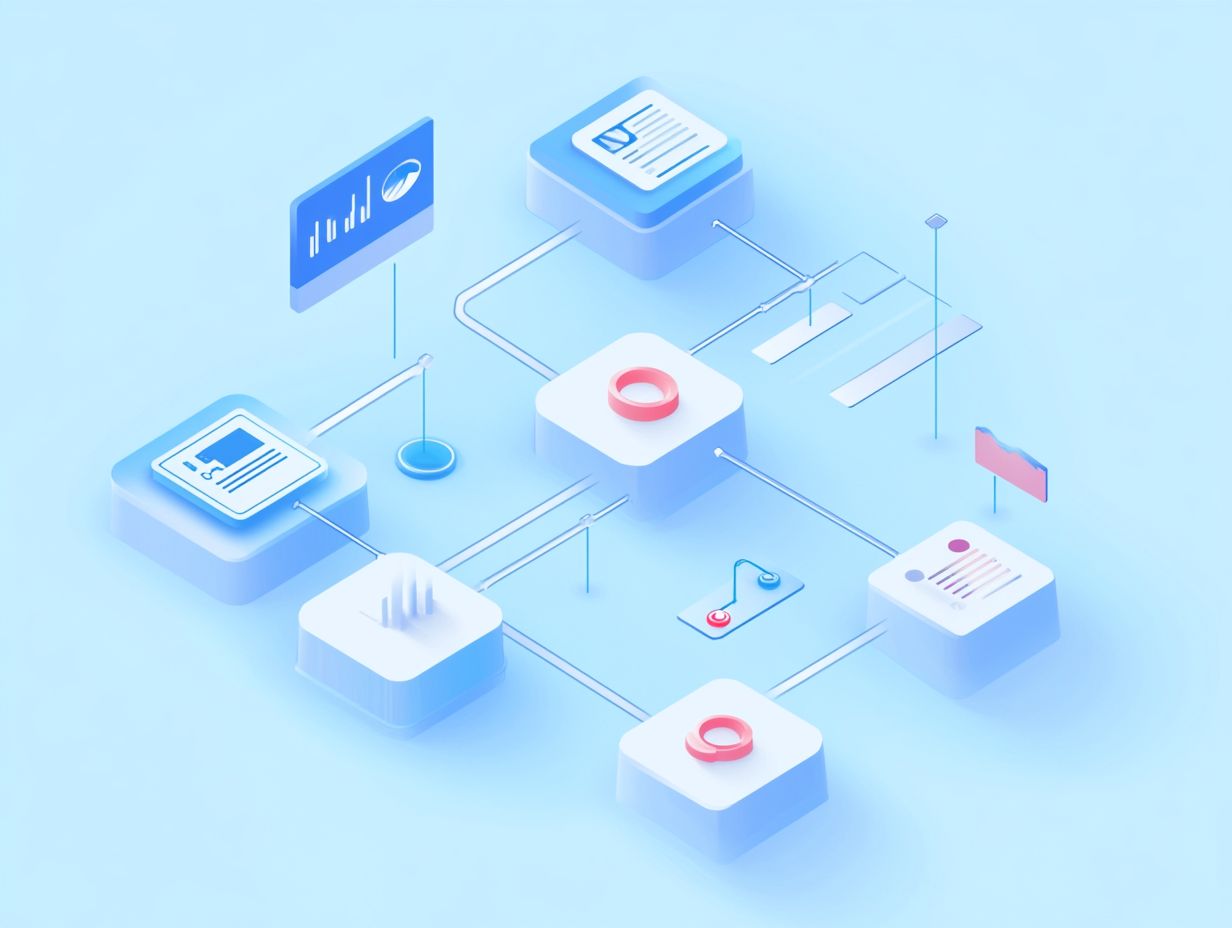Understanding the PaaS Development Lifecycle
In today s fast-paced digital landscape, Platform as a Service (PaaS) is a game-changer. It revolutionizes how businesses develop and deploy applications.
This article takes you through the stages of the PaaS development lifecycle, covering everything from planning and design to deployment and management.
It emphasizes the benefits you can reap, such as enhanced efficiency and scalability, while also addressing the challenges you might face with security and integration.
Discover best practices that will make your PaaS projects successful!
Dive in to see how PaaS can elevate your development process!
Contents
- Key Takeaways:
- The Stages of PaaS Development Lifecycle
- Benefits of Using PaaS
- Challenges of PaaS Development
- Frequently Asked Questions
- What is the PaaS Development Lifecycle?
- Why is Understanding This Lifecycle Important?
- What Are the Key Steps in the PaaS Development Lifecycle?
- How Does the PaaS Development Lifecycle Differ from Others?
- What Are the Benefits of Following This Lifecycle?
- How Can I Ensure a Successful PaaS Development Lifecycle?
Key Takeaways:

- PaaS is a cloud model that helps developers build, test, and deploy applications.
- The PaaS development lifecycle includes planning, design, development, testing, deployment, and management.
- PaaS offers benefits like efficiency, cost savings, scalability, and flexibility.
What is PaaS?
Platform as a Service (PaaS) is an advanced cloud service model that gives you the power to build, deploy, and manage applications without the hassle of overseeing the technology that supports your applications.
This approach streamlines your software development process. It allows for rapid deployment and scalability key elements in today s fast-paced business landscape.
By abstracting away the complexities of infrastructure management, PaaS enables you to concentrate on what truly matters: coding and enhancing the user experience.
This not only simplifies your agile development process but also elevates the quality of your applications. Equipped with built-in tools for database management, application hosting, and seamless application integration, PaaS drastically cuts down the development time.
Leading providers like Google Cloud and Microsoft Azure exemplify these capabilities, offering extensive support and features that foster collaboration within development teams.
The true value of PaaS lies in its ability to facilitate a quicker time-to-market for your applications, all while minimizing operational overhead.
The Stages of PaaS Development Lifecycle
The PaaS development lifecycle is essential for guaranteeing that your applications are delivered with precision and effectively address customer needs.
This lifecycle includes several key stages:
- Planning
- Design
- Development
- Testing
- Deployment
- Management
Each stage plays a vital role in enhancing the overall quality and reliability of your software application.
Planning and Design
In the realms of PaaS development, planning and design are your foundational stages. Here, you and your team will strategize the application’s architecture and user experience, ensuring that both technical and business requirements are met with efficiency and precision.
This meticulous approach sets the stage for agile development practices that champion flexibility and prioritize customer feedback. It s not just about creating a product that fits seamlessly within the cloud infrastructure; it s about crafting an experience that truly resonates with end users.
By weaving digital marketing strategies into your planning phase, you can gather valuable insights that shape features in tune with market demands. This alignment not only enhances customer satisfaction but also drives successful application outcomes, giving you a formidable competitive edge in the ever-evolving tech landscape.
Development and Testing
The development and testing phase is crucial in the PaaS lifecycle. Here, developers use various programming languages and tools to create scalable applications while ensuring security through thorough testing.
Tools that package applications become essential allies. They help encapsulate applications and their dependencies, ensuring consistent performance across different environments.
This approach simplifies deployment and boosts application management. When combined with performance monitoring tools, you gain insights into how your applications behave in real time.
This enables you to quickly spot issues and optimize resources. As a result, you respond effectively to user needs, enhancing reliability and satisfaction.
Deployment and Management

Deployment and management are key stages in the PaaS lifecycle. This is where you launch applications in the cloud and monitor their performance.
Using various deployment strategies, especially continuous integration and delivery (CI/CD), helps streamline your initiatives. You can significantly cut down the time it takes to bring new features or updates to market.
These methods allow you to iterate quickly. This flexibility helps your team respond to user feedback while managing resources effectively.
Integrating business intelligence tools can improve decision-making. They provide insights into operational costs, supporting smarter investments in application performance.
A well-executed deployment can impact your operational efficiency greatly. It enhances the effectiveness of your cloud applications.
Benefits of Using PaaS
Using Platform as a Service (PaaS) unlocks many advantages. These benefits enhance your application development and operational efficiency.
This approach saves costs and provides the flexibility to adapt to changing business needs. You can scale applications easily as requirements change.
Efficiency and Cost Savings
PaaS drives efficiency and cost savings. It allows you to manage resources effectively while reducing infrastructure management costs.
This platform simplifies software development by offering built-in tools that speed up application deployment. You can automate repetitive tasks and optimize workflows, reducing the need for extensive IT staff.
With the ability to scale in real-time, you align resource use with demand. This avoids unnecessary spending and boosts productivity.
The result is a more sustainable and cost-effective way to manage your software solutions.
Scalability and Flexibility
Scalability and flexibility are vital features of PaaS. They allow you to adjust your applications and infrastructure to meet changing demands.
With cloud services, PaaS lets you deploy applications easily. You can adjust resources up or down in real-time as needed.
This dynamic management ensures efficient resource allocation. It reduces unnecessary costs while maximizing performance.
As user demand fluctuates, PaaS provides the agility to make changes without long downtimes. Your development teams can enjoy a smoother process that supports rapid deployment and testing, fostering innovation.
Challenges of PaaS Development
Despite the benefits, PaaS presents challenges. Key issues include security, data privacy, and integrating new applications with existing systems.
Security and Data Privacy

Security and data privacy should be your top priorities in PaaS development. Make sure your organization meets those important regulations and protects user data in the cloud.
To tackle these critical issues, PaaS providers implement a comprehensive suite of security measures, including advanced encryption techniques that shield data during transit and at rest.
Tiered access controls empower your organization to determine who can access sensitive information, ensuring only authorized personnel hold the necessary permissions. These strategies enhance customer satisfaction and build trust in the ecosystem.
With various service models available, emphasizing stringent data protection protocols allows you to create a secure environment. This way, you can confidently deploy and manage applications without compromising security.
Integration with Existing Systems
Integrating PaaS with existing systems can present challenges, especially if you’re relying on legacy systems that struggle with modern cloud services and tools that allow different software programs to communicate.
To navigate these complexities, consider employing strategies like utilizing APIs for seamless communication and leveraging middleware solutions. These tools bridge the gap between old and new technologies, making transitions smoother.
It’s essential to maintain operational continuity throughout the integration process, ensuring daily activities remain uninterrupted. This focus is critical as your teams adapt workflows, allowing for modern infrastructure while minimizing disruptions during PaaS migration.
Best Practices for Successful PaaS Development
Implementing best practices in PaaS development is crucial for achieving successful outcomes. This ensures your applications meet evolving customer needs and thrive through enhanced collaboration and continuous monitoring.
Collaboration and Communication
Effective collaboration and communication are key to your success in PaaS development. They enable teams to work together seamlessly across different locations and enhance the development process using agile methodologies.
By utilizing digital applications like project management software, you can streamline workflows, assign tasks effortlessly, and monitor progress in real-time. Communication platforms elevate these efforts, ensuring team members can share critical information and updates easily.
These tools help meet deadlines and promote transparency and accountability within your projects. By adopting these strategies, you can significantly elevate customer satisfaction, delivering products that align with user needs quickly.
Continuous Monitoring and Improvement
Continuous monitoring and improvement are vital in PaaS, allowing you to track application performance, user experience, and resource allocation to identify areas needing enhancement.
By harnessing modern observability tools, you gain insights into your cloud infrastructure, ensuring that performance bottlenecks are addressed promptly.
This proactive approach boosts application efficiency and elevates user satisfaction, significantly contributing to your business intelligence goals.
With real-time data analysis, you can make informed decisions that drive continuous improvement, enabling agile responses to user needs and market changes.
In today s competitive landscape, adopting an adaptive strategy for application management is essential for sustained success.
Frequently Asked Questions

What is the PaaS Development Lifecycle?
The PaaS development lifecycle is the process of developing, deploying, and managing applications on a platform-as-a-service (PaaS). This lifecycle includes stages like planning, development, testing, deployment, and maintenance.
Why is Understanding This Lifecycle Important?
Understanding the PaaS development lifecycle helps developers and organizations use PaaS platforms effectively. This knowledge maximizes the benefits and ensures smooth application development, making it essential to explore why choose PaaS for application development.
What Are the Key Steps in the PaaS Development Lifecycle?
The key steps include planning, coding, testing, deployment, and maintenance. Each step has specific tasks that are essential for successful application development.
How Does the PaaS Development Lifecycle Differ from Others?
The PaaS lifecycle stands out because it relies on cloud-based tools. The PaaS provider manages the underlying infrastructure, speeding up and improving the development process.
What Are the Benefits of Following This Lifecycle?
Following this lifecycle reduces development time and improves scalability. It also allows developers to focus on coding and innovation instead of managing infrastructure.
How Can I Ensure a Successful PaaS Development Lifecycle?
To succeed, understand the platform and its capabilities. Regular testing and monitoring of the application are crucial to address any issues promptly.






